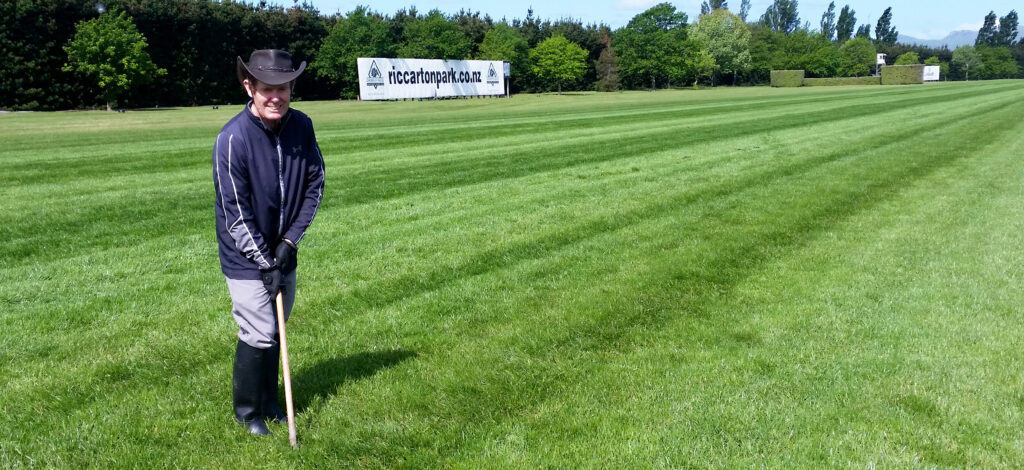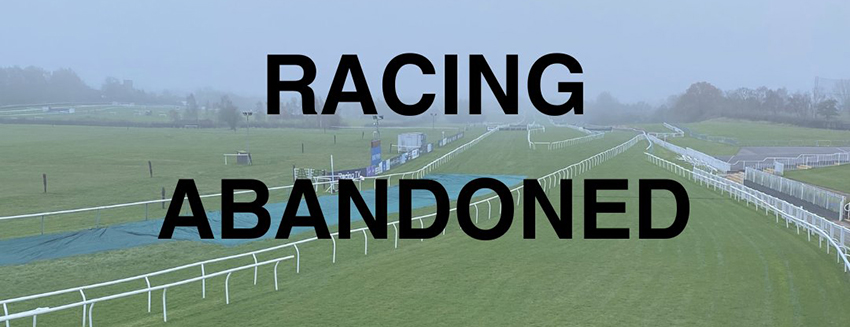by Brian de Lore
Published 27 April 2025
The continuing theme of racing abandonments due to unsafe tracks is causing immeasurable harm to a racing industry that doesn’t seem able to get its act together.
Accountability seems to be a major problem. You can’t blame the jockeys if a track is unsafe, and you can’t blame the stipendiary stewards who are bound by the Health and Safety Act. That only leaves the track managers and the protocols for the preparation of tracks that come from NZTR.
Imagine that you’re an Auckland owner with a horse trained in Matamata that was supposed to trial at Taupo on March 25th. You drive to Taupo to watch it, but after two trials, they are abandoned, and you’ve made the trip for nothing.
The same horse is an acceptor for Awapuni last Friday, so you drive to Palmerston North, stay in a hotel the night before, and expect to go racing the next day. The races are off after race one, leaving the owner angry, deflated and out of pocket. Don’t imagine it; it’s a true story.
That owner is now inclined to give up ownership due to his rising blood pressure and depleted bank account.
Awapuni last Friday adds another statistic to the countless number of abandonments we have seen over the past few years. When there is torrential rain and surface water, we all know that abandonment is inevitable, but here we are talking about avoidable abandonments after the meeting has started.
How much is it costing owners?
How much has it cost the owners who pay for everything on raceday? How much has it cost the TAB/Entain partnership in loss of betting revenue, and Entain in particular, because they pay the cost of running the TAB and guarantee the increased stake levels?
Little wonder there has been a strained relationship between NZTR and Entain.
The buck must stop with NZTR, but you wouldn’t think so reading the statement made by the new NZTR CEO, Matt Ballesty, following Friday’s Awapuni abandonment after race one.
He said, “I trust that, while understandably frustrated, all participants will continue to show respect towards the track staff and club management. A significant amount of effort, resources, and consultation from track management, consultants, and officials has gone into preparing the track for racing, and the recent setback was entirely unforeseen.”
RACE Awapuni General Manager Brad Taylor expressed his disappointment but was eager to review processes to prepare for future racedays.
“We will examine the process leading into today and learn from it and hopefully resolve this issue to be back racing here in three weeks,” he concluded.
Unforeseen track problem claim disputed
New CEO Matt Ballesty’s claim that the problem was ‘unforeseen’ is disputed by several observers close to the action.
He should also cut out this rubbish about being nice to the track staff because that only suggests they are to blame. NZTR is hiding behind the track staff. By saying that, he is deflecting accountability from himself as the boss of the organisation that put the structures in place.
Okay, he’s been in the job only a short time
A reliable source of information has told The Optimist that two Regional Track Managers in succession wouldn’t sign off Awapuni as ‘ready for use’ (one very recently), and that’s when NZTR involved two Australians, Liam O’Keeffe and Callum Brown, to advise as consultants.
NZTR wanted to get racing again at Awapuni and were too impatient, according to my informant.
The rail at Awapuni was positioned six metres out because rocks had appeared coming through the surface during verti-draining at one small area of the track near the 600-metre mark, about three metres out. The accusation is that they took the cheaper option to fix the problem.
The horse that slipped on raceday was the widest runner, possibly another six metres out from the false rail on ground that had not been galloped on.
All this after 18 months of remediation of the entire course – the last Awapuni meeting took place in September 2023; it’s a ridiculous outcome, but consistent with the Hastings debacle. My informant says that Hastings could be in use now if they simply kept the rail in its true position. Darin Balcombe and Bruce Sharrock made a hasty, ill-conceived decision to sideline Hastings.

After the Taupo trials abandonment, which had followed the Tauherenikau abandonment, NZTR released a statement saying they took some responsibility but mostly blamed the track staff.
It said: “NZTR Chief Operating Officer Darin Balcombe said, ‘New Racecourse Managers are difficult to find, and we must provide them with stronger induction, training, and support systems.’
“ ‘Preparing track surfaces for racing is a specialised skill that comes only with experience, support and proper training,’ he said.
“NZTR accepts that earlier involvement may have avoided the Taupō outcome. Work is already underway to strengthen support, oversight and accountability across the tracks and infrastructure network.”
Abandonments keep mounting up
Perhaps Darin Balcombe needs to refresh his own memory and count up the number of abandonments racing has had under his watch.
NZTR has some parallels with a book I’m currently reading; it could even be the NZTR anthem. It’s entitled MISTAKES WERE MADE (but not by me), which the Wall Street Journal reviewed by saying “Illuminating when you recognize yourself in the stories it tells – mortifying.”
The New Zealand Racehorse Owners’ Association President, Bernard Hickey, has written to NZTR claiming the problems at Awapuni were known well before the race date, and the meeting should have been transferred to Otaki.
His letter also said, in part,” …evidence from my point of view is that RACE, RIU and NZTR were culpable in terms of the provision of the Health & Safety Act in not showing due diligence in its decision-making process. No doubt the Club’s Risk Register was updated when the hazards were identified during the week that led to the rail being pushed out, which is a risk in itself at Awapuni, but I doubt such documentation even exists.”
The Trainers’ Association does nothing. It is a toothless, benign organisation that is seemingly frightened that its members won’t get their licences renewed each season if they say anything.
In the first week of December 2021, NZTR put out a statement to the stakeholders entitled, “Actions following Trentham Abandonment 4 December 2021.”
Here is the second half of it, outlining the ‘actions’ they would take. While reading it, think about how much of this gets done and the multitude of abandonments we’ve had since it was written:
What NZTR said in 2021…
Actions
“The NZTR Board has considered a report and recommendations from NZTR Management. One of the major issues identified in the report was the lack of a clear shared understanding between NZTR, the RIB and Clubs about each organisation’s respective responsibilities and accountabilities to prepare a track surface, and the consequences for those entities where non-compliance is identified.
“This is no longer acceptable and the NZTR Board has agreed to a suite of changes to the track preparation and management process so that it is clear what the obligations are and who is responsible for them.
“The agreed actions going forward are:
• NZTR to review and update the Track Preparation Policy and Abandonment protocols by the end of January 2022;
• NZTR to determine, in consultation with Clubs, an investment plan for track equipment and resources for the next three years by the end of March 2022;
• NZTR and NZSTI, in consultation with Clubs, fast track the implementation of and compliance with mytrackmanager.nz – an online portal for all clubs to regularly monitor track performance, build data comparisons, provide training tools and real time access to track maintenance planning by the end of June 2022;
• NZTR to implement a more robust compliance program for Clubs that do not adhere to track preparation procedures and annual maintenance plans, including consequences for non-compliance with policies and procedures, by February 2022;
• NZTR to investigate and arrange a whole-of-industry weather service, with decisions made by March 2022;
• NZTR, in consultation with Clubs and RIB, to set a communication process to enhance the sharing of track surface information to all participants by the end of February 2022;
• NZTR, in consultation with clubs, to set a plan to ensure that track renovations are aligned with the annual race date allocation process by the end of February 2022;
• NZTR, in consultation with RIB and Clubs, to determine a process to manage queries/concerns from participants before and after each race meeting by the end of January 2022; and
• NZTR to implement a reporting and action framework for clubs to notify track performance issues during race meetings by the end of January 2022. “
Footnote:
Will the situation improve in the future? – doubtful. Will more NZTR-Stakeholders meetings be held to fix the problem? – bound to be, just as they have done in the past. It’s called Groundhog Day.
No one will get sacked, and NZTR still appears to be accountable to no one.
It’s simply a further reminder of Albert Einstein’s definition of insanity: Doing the

